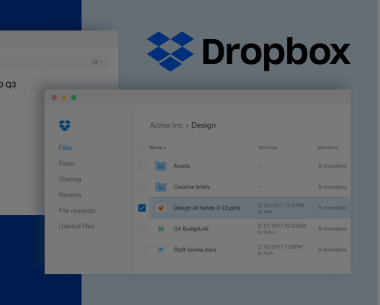Many businesses utilize Minimal Viable Products (MVPs) or Proof of Concepts (POCs) to test their ideas before devoting additional time and resources to the development of new goods or services. Despite the fact that these two strategies are frequently used interchangeably, they are not the same.
An MVP is a product that only has the features that are absolutely necessary to verify a claim or address a specific issue. It is intended to assist teams in swiftly testing their hypotheses and gathering feedback from early adopters, so they can continue to evolve and enhance their products.
A POC, on the other hand, is a prototype that shows whether a concept or technology is workable. Often, it is produced to demonstrate an idea’s viability and highlight its prospective advantages. Although both MVPs and POCs are intended to lessen risk and uncertainty, their functions are distinct and their degrees of investment vary. We will go into more depth about the main distinctions between these two strategies in the following section.
Why use MVP and POC?
While creating new products or features, MVPs and POCs are used to reduce risk and uncertainty. Teams may test their ideas without spending a lot of money up front by developing a minimal viable product or a proof of concept. With this strategy, they may collect user and stakeholder input and decide how to advance their technology or product based on data.
Startups and small enterprises who want to test their ideas on the market before devoting a significant amount of resources to development might benefit the most from MVPs. They may test their hypotheses and get feedback from early adopters by creating an MVP, which will enable them to determine whether their product is a good match for the market and to make strategic adjustments. MVPs also provide teams with the ability to iterate rapidly and lessen the chance of creating a product that no one will buy.
On the other side, larger businesses frequently utilize POCs when they are investigating novel ideas or technology. POCs provide them with the opportunity to evaluate an idea’s viability before committing to a full-scale execution. Teams can detect possible technical problems and assess an idea’s feasibility from a technical standpoint by developing a proof of concept. Before devoting a lot of money to its development, POCs let stakeholders see the advantages of a technology or concept.
Using MVPs and POCs is often done to lower risk, collect feedback, and make data-driven choices about product development. Teams may decide which ideas to pursue and how to develop their goods or technologies over time by testing concepts in the market and assessing their technical viability.
MVP vs POC: Differences in Development and Testing
MVPs and POCs have distinct development and testing needs since they serve various goals. POCs are made to show the viability of an idea or technology, whereas MVPs are made to test a hypothesis or address a specific problem.
An MVP is often developed by building a stripped-down version of a product with only the elements that are absolutely needed to test the hypothesis or address the issue. The goal is to create a product that can be swiftly tested in the market and improved upon in response to customer input. Agile approaches, which place a strong emphasis on quick prototyping, testing, and iteration, are typically used to create MVPs.
The development of a POC, on the other hand, entails making a prototype that exhibits a concept’s technological viability. The emphasis is on developing a working prototype that demonstrates an idea’s viability and highlights its potential advantages. POCs may demand more up-front costs and perhaps more difficult development and testing procedures.


Between POCs and MVPs, different testing needs must be met. Early adopters test MVPs in the market to collect feedback and confirm presumptions. This testing procedure is centered on determining what in the product works and what doesn’t, then iterating depending on feedback. POCs, on the other hand, are put to the test to determine their technical viability and pinpoint any potential problems or restrictions. This testing procedure aims to pinpoint technological difficulties and determine whether a concept can be scaled up.
In general, the variations in development and testing between MVPs and POCs reflect their various aims and functions. POCs are made to evaluate a product’s technical viability and demonstrate its potential advantages, whereas MVPs are made to test product-market fit and modify a product based on user feedback.
MVP and POC in startup culture
While creating new goods or technologies, startup culture frequently uses MVP and POC to reduce risk and uncertainty. The usage of MVPs and POCs may assist startups, who frequently have limited resources and deal with a high degree of uncertainty while building new products, by helping them to confirm their assumptions and make data-driven decisions.
Since they allow teams to test their ideas quickly and affordably, MVPs are particularly well-liked in startup culture. Startups may test their hypotheses and gain input from early adopters by developing an MVP. This can assist them to iterate on their product and determine product-market fit. MVPs also provide startups with the ability to iterate quickly and pivot as necessary, which is crucial in a startup setting where things move quickly.
POCs are frequently employed in startup culture, especially in the technology industry. Before investing a lot of money in developing a new technology or concept, entrepreneurs can evaluate its viability via POCs. Startups can assess the potential advantages and technical difficulties of new technology, as well as pinpoint any possible problems or restrictions, by developing a working prototype.
Ultimately, MVPs and POCs are crucial tools in startup culture because they enable businesses to lower risk, test hypotheses, and make data-driven choices. Startups may iterate fast, improve their products, and determine product-market fit by deploying MVPs and POCs, which is crucial for success in a cutthroat startup climate.
Examples of successful MVP and POC
Dropbox, a cloud-based service for sharing and storing files, is one well-known example of a successful MVP. The business began with a straightforward MVP that let customers share and save data using a straightforward folder structure. With the help of this MVP, the business was able to swiftly iterate in response to user input and verify its central premise that there was a market for cloud-based file storage and sharing. Now valued at over $8 billion, Dropbox has over 700 million registered users.
Airbnb, a website that lets users rent out their houses or flats to tourists, is another successful MVP. The business began with a minimal viable product (MVP) that enabled the founders to test their concept by renting out air mattresses in their flat throughout a hectic conference. The creators were able to develop their product based on user input and verify their premise that there was a demand for peer-to-peer short-term rentals thanks to this prototype. Now, Airbnb is worth over $100 billion and has over 7 million properties globally.


One instance of a successful POC is the commercial space exploration firm SpaceX. The company’s first proof-of-concept rocket, the Falcon 1, was created to show that reusable rockets are feasible and to offer a less expensive option to established space launch companies. The Falcon 1’s successful launch showed that the company’s strategy was technically feasible and prepared the path for continued research and development of reusable rockets. As of right now, SpaceX has completed a lot of successful launches and has revolutionized the space launch sector with its cutting-edge technologies.
Tesla, a firm that creates electric automobiles and alternative energy solutions, is another prosperous POC. The Roadster, a sports car that illustrated the viability of electric vehicle technology and the potential advantages of environmentally friendly transportation, served as Tesla’s inaugural proof-of-concept. The Roadster helped establish Tesla as a market leader and set the path for subsequent advancements in electric car technology. Now, Tesla is one of the most valuable automobile businesses in the world with a market valuation of over $800 billion.
Overall, these illustrations highlight the value of MVPs and POCs in empowering entrepreneurs and businesses to test their concepts, confirm their hypotheses, and make data-driven choices. Companies may lower risk, iterate fast, and commercialize cutting-edge goods and technology by deploying MVPs and POCs.
Best Practices: Tips for Successfully Building MVP and POC
Whether you’re a startup founder or working on a new product within a larger organization, these best practices can help you to effectively test your product hypothesis and validate the potential for success. These pointers will enable you to create an effective MVP or POC and position your product for success.
1. Concentrate on the main value proposition: It’s crucial to concentrate on the primary value proposition of your technology or product when developing an MVP or POC. Prioritize the elements that are most important for providing value to your target audience and include them in your MVP or POC. You can make sure that your MVP or POC successfully tests your product hypothesis and confirms its likelihood of success by concentrating on the primary value proposition.
2. The ability to test your assumptions and receive user feedback early in the development process is one of the main advantages of MVPs and POCs. Early and frequent user testing of your MVP or POC is crucial in order to iterate and improve your product. You can find possible problems or areas for improvement by testing frequently and early, and you can decide how to build your product based on that information.
3. Maintain simplicity: When developing an MVP or POC, it’s crucial to maintain simplicity and concentrate on the most crucial characteristics or functionalities. Avoid the impulse to add features or complexity that will only serve to impede development or distract from the essential benefits of your product. You can rapidly and successfully validate your product hypothesis by keeping things simple.
4. Have a clear scaling strategy: While an MVP or POC is made to test your product hypothesis and confirm its viability, it’s crucial to have a strategy for scaling your product if it proves effective. Consider how you will scale your product if it develops popularity and what resources you will need to support that growth before developing your MVP or POC.
5. Last but not least, you must be prepared to pivot if your MVP or POC doesn’t prove your product premise. Be prepared to change direction and your strategy if feedback indicates that your product isn’t satisfying the needs of your target market or isn’t commercially viable. Changing course can be a beneficial learning opportunity that ultimately results in a more marketable product.
Overall, following these best practices will enable you to create an MVP or POC that successfully verifies the viability of your product and tests your product hypothesis. You may increase your chances of success while developing an MVP or POC by concentrating on the primary value proposition, testing frequently, keeping things straightforward, having a clear plan for scaling, and being willing to pivot.

Conclusion
Building an MVP or POC is an important step in bringing your product or technology to market. By understanding the differences between these two approaches and following best practices for development and testing, you can effectively validate your product hypothesis and increase your chances of success. At Eventyr, we have a highly qualified professional team that can help you bring your idea to life. We work closely with our clients to ensure that their MVPs and POCs effectively test their product hypotheses and lay the foundation for future success. Contact us today for additional information and let us help you turn your vision into reality.




